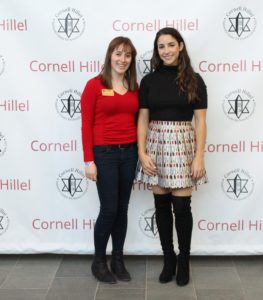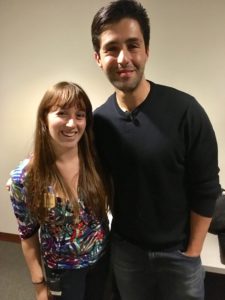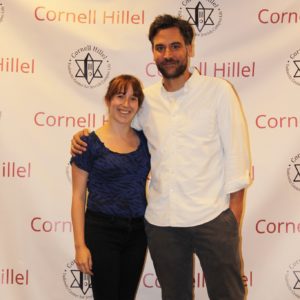Honoring My Judaism
January 27th of each year is International Holocaust Remembrance Day, where the world remembers the victims: more than six million Jews and millions of others. The Holocaust, according to the United States Holocaust Memorial Museum, was “the systemic, state-sponsored persecution and murder of six million European Jews by the Nazi German regime and its allies and collaborators.” The museum defines the timeline of the Holocaust as 1933 to 1945, beginning when the Nazi party came to power in Germany, and ending when the Allies defeated Nazi Germany in World War II. The Hebrew word for catastrophe is sho’ah (שׁוֹאָה) and this is often used as another name for the Holocaust (the Shoah).
The Holocaust didn’t begin with genocide; it began with antisemitism, including the exclusion of Jews from German society, discriminatory laws, and targeted violence. It didn’t take long for these antisemitic measures to escalate into genocide. Unfortunately, although the Holocaust happened a long time ago, antisemitism is still prevalent in our current world, and it feels like it’s been on the rise during my lifetime: celebrities are denying that the Holocaust ever happened, there was a terrifying attack on a Pittsburgh synagogue in 2018, and there has been vandalism of Jewish schools, community centers, and areas of worship.
My first job out of college was communications and special projects coordinator for Cornell Hillel, a branch of Hillel, an international Jewish college student life organization. I learned a lot about communications, marketing, and event planning at this job, and I even got to meet some famous Jewish people, including Olympic gymnast Aly Raisman, actor Josh Peck, journalist and author Irin Carmon, and, my personal favorite, actor Josh Radnor. I also got to view an early screening of the powerful movie “Denial,” an adaptation of the true story of professor Deborah Lipstadt having to prove the Holocaust actually happened.



Unfortunately, we were also recipients of antisemitism. We always held our High Holiday (Rosh Hashanah and Yom Kippur – the two biggest holidays of the Jewish year) services in multiple locations across campus, and in my second year, someone decided to paint a swastika on the student union building where they knew our services were going to be that evening. Although nothing else happened, this was a scary and serious incident, and it was shocking to me. I grew up learning about the Holocaust and antisemitism in general, but I had never experienced anything like this firsthand.
I grew up in Westchester County in New York, about an hour north of Manhattan, which, according to the Westchester Jewish Council, is the eighth largest Jewish county in the United States, with 150,000 Jews, around 60 synagogues, and more than 80 Jewish organizations. I went to Hebrew school, had a Bat Mitzvah at age 13, and had many friends who were also Jewish. For college, I went to Binghamton University in New York, which is about 30% Jewish. None of these statistics really came as a surprise, because as of 2022, 8.8% of the state of New York was Jewish.
When I moved to Colorado in 2018, I experienced a big culture shock and was surprised at the smaller Jewish population. As of 2022, only 1.7% of the state was Jewish. Since I live in the Denver metro area, home to 90,800 Jews as of 2019, there are some synagogues around and grocery stores still tend to stock familiar kosher and holiday items, but it still feels different. I have not met many other Jewish people and have not yet found a synagogue that feels like the right fit for me, so it’s up to me to figure out how to be Jewish in my own way.
There’s no right or wrong way to identify as Jewish. I don’t keep kosher, I don’t observe Shabbat, and I often physically can’t fast on Yom Kippur, but I am still Jewish and proud of it. When I was younger, it was all about spending the holidays with my family: eating apples and honey at my aunt’s house for Rosh Hashanah (the Jewish new year); suffering through fasting together on Yom Kippur and counting down the hours until sundown so we could eat; family traveling from all over the country to be together for Passover seders (my personal favorite holiday); and lighting Hanukkah candles with my parents, aunts, uncles, and cousins when possible.
Now that I’m older and no longer live within a short drive of family, the holidays we get to spend together are fewer and farther between. I celebrate the holidays in a different way when we’re not together, and over the years I’ve learned that that’s okay. Sometimes this means hosting a Passover seder or making latkes for my non-Jewish friends (and educating them that the perfect latke pairing is both applesauce and sour cream), sometimes it means eating a bagel and lox brunch on the weekends, and other times it means FaceTiming with my family in New York to light Hanukkah candles. I am proud to be Jewish and grateful that I can honor my Judaism in my own way!
Ways to Observe International Holocaust Remembrance Day
- Visit a Holocaust museum in person or online.
- The Mizel Museum in Denver is open by appointment only, but you can learn a lot on their website even if you are not able to visit the museum.
- The United States Holocaust Memorial Museum has an educational virtual tour on their website.
- Yad Vashem, The World Holocaust Remembrance Center, located in Israel, also has an educational virtual tour on YouTube.
- Donate to a Holocaust museum or a survivor.
- The Blue Card is a charity that gives financial help to Holocaust survivors.
- The Jewish Federations of North America help the ~80,000 Holocaust survivors living in the United States.
- Search for family members. If you want to find family members lost in the Holocaust who may still be alive today, visit:
- Learn more about Judaism.